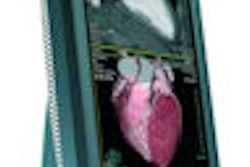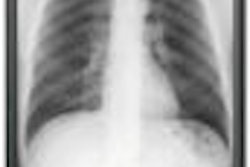CHARLOTTE, NC - Using a dedicated 3D server to automatically generate multiplanar reformations in trauma-related CT exams dramatically accelerates image availability and department efficiency, according to a presentation at this week's Society for Imaging Informatics in Medicine (SIIM) conference.
Researchers from the radiology department at the Hospital of the University of Pennsylvania (HUP) in Philadelphia wanted to see if adding a dedicated 3D server to its PACS network would improve its service to the emergency department. They thought it might, but they never expected to see a 15- to 33-fold improvement in efficiency, Dr. Jason Itri, Ph.D., told SIIM 2009 attendees.
They decided to investigate the 3D server as an alternative to on-the-fly reformatting, which isn't possible at HUP due to the use of multiple CT scanners from a variety of vendors, limited access to advanced visualization workstations, and a legacy PACS that does not support this type of functionality.
At HUP, CT exams are completed only when both axial and coronal and sagittal reformatted images are available. CT technologists working in the emergency department were responsible for creating maximum intensity projection (MIP) and multiplanar reformatted (MPR) images, a process that without interference would take about two minutes. However, because there were frequent interruptions, the process could take half an hour or more.
Adding a dedicated server connected to CT scanners through DICOM routers to automate 3D processing solved the problem. Images were processed in one to two minutes. Both technologist and radiologist workflow also improved.
Quantifying results
To quantify the results and help cost-justify the dedicated server, processing times were compared. During a 14-day period, researchers used a stopwatch to measure the time span of images being simultaneously processed by the server and by technologists.
The average time delay attributable to the technologist for generating coronal and sagittal reformations of the cervical spine was 15 minutes (range, three to 57 minutes). The average time required for the dedicated server to automatically generate coronal and sagittal reformations for the cervical spine studies was one minute, with a range of one to two minutes.
It took approximately three minutes to transmit the axial images from the CT scanner to the dedicated server, although image arrival depended on network traffic and could take up to 10 minutes.
For coronal and sagittal reformations of the thoracic and lumbar spine, technologists had an average time delay of 33 minutes (range, eight to 127 minutes). By comparison, the average time required for the dedicated server to automatically generate coronal and sagittal reformations for the thoracic and lumbar spine studies was one minute (range, one to two minutes).
The researchers conducted a survey to determine if radiologists reading these cases were happy with the quality of the reformatted images created by the dedicated 3D server, and whether immediate access to MIP and MPR images was of clinical value.
Eighteen out of 30 radiologists responded to the survey. The images were regularly used by 86%, 76% reported that their availability helped increase diagnostic confidence, and 69% felt that they increased diagnostic accuracy. With the exception of one radiologist, the images reformatted by the dedicated server were preferred by the respondents.
The radiology department expanded use of dedicated servers to routine imaging for these applications and plans to add additional applications, according to Itri.
By Cynthia E. Keen
AuntMinnie.com staff writer
June 6, 2009
Related Reading
Enterprise-wide 3D extends radiology's boundaries, June 2, 2009
Turning your 3D lab into a profit center, May 21, 2009
Hybrid 'thin/thick' approach may be best for CT data storage, May 21, 2009
Auxiliary PACS server aids thin-slice CT data management, May 2, 2006
Copyright © 2009 AuntMinnie.com



















